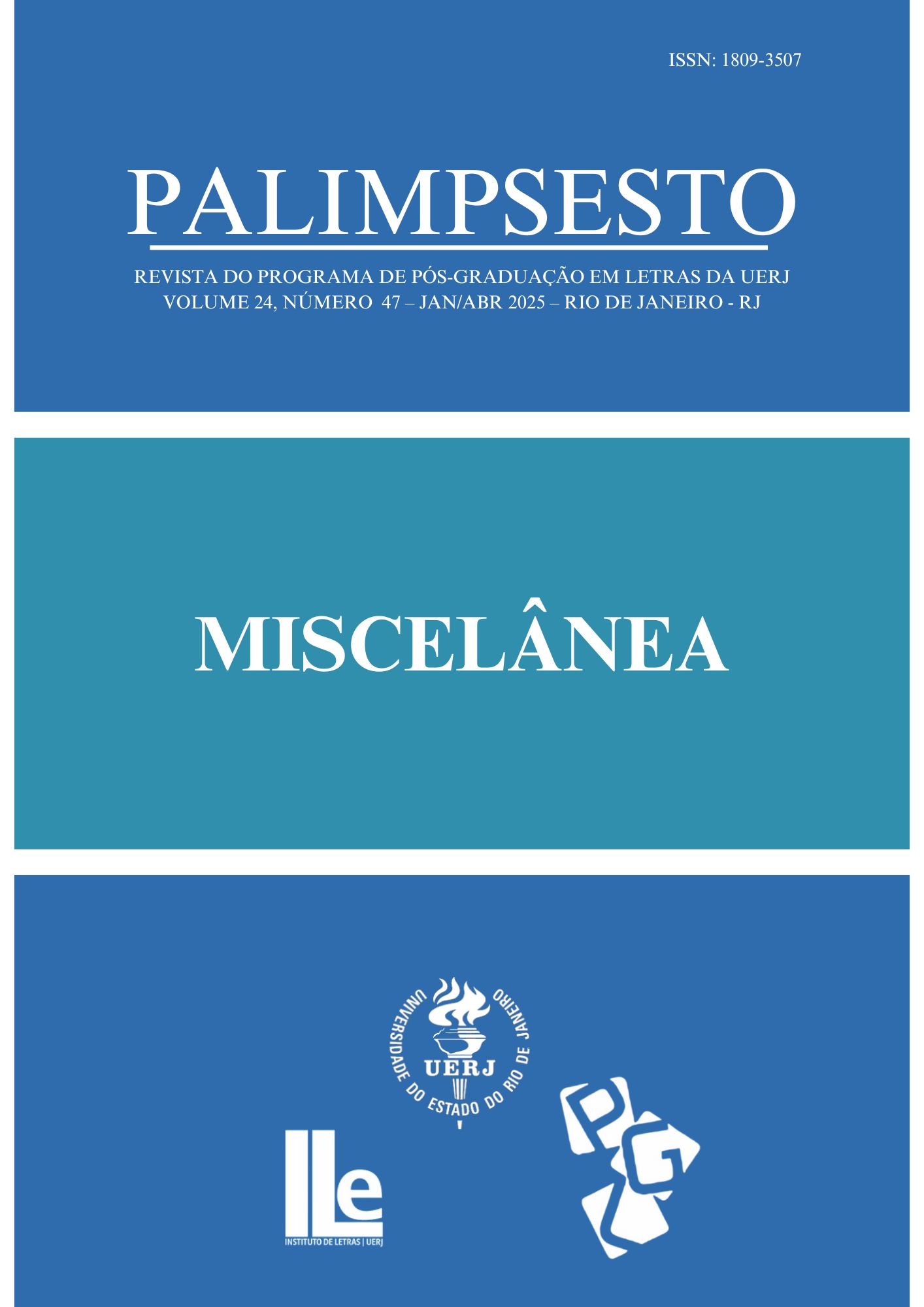A problemática da (in)definição do conto
DOI:
https://doi.org/10.12957/palimpsesto.2025.83301Keywords:
Conto, Conto moderno, Conto clássicoAbstract
This article seeks to reflect on the short story genre and its imprecise limits. In an attempt to delimit the essential characteristics of the genre, we propose to understand it, initially, as a result of orality, always moralizing in nature. Poe establishes guidelines for another type of short story: the unity of effect and its consequent brevity. Furthermore, it creates another logic for the tale: it starts to tell two stories: the apparent one and a second one that is encrypted in the first. Chekhov once again transforms the logic of the genre, with his open endings and plots based on common human beings and their everyday woes. Based on considerations regarding the historical development of the genre and anchored in authors and theorists of the short story, we intend to understand it as a plural genre.
Downloads
References
ANDRADE, Mário de. O empalhador de passarinho. São Paulo: Martins; Brasília: INL, 1972.
ANGELIDES, Sophia. A. P. Tchekhov: Cartas para uma Poética. São Paulo: Edusp, 1995.
BOYD, William. A short history of the short story. Prospect. 2006. Disponível em: https://www.prospectmagazine.co.uk/culture/57299/a-short-history-of-the-short-story. Acesso em: 16 jan. 2024.
CASTAGNINO, Raúl Héctor. Suertes del cuento y destinos del artefacto. In: PACHECO, Carlos; BARRERA LINARES, Luis. (Compiladores). Del cuento y sus alrededores: aproximaciones a una teoría del cuento. Caracas: Monte Ávila Editores Latinoamericana, 1993.
CORTÁZAR, Julio. Valise de cronópio. São Paulo: Perspectiva, 2006.
KIEFER, Charles. A poética do conto: de Poe a Borges – um passeio pelo gênero. São Paulo: Leya, 2011.
OMIL, Alba; PIÉROLA, Raúl. El cuento y sus vecinos. In: PACHECO, Carlos; BARRERA LINARES, Luis. (Compiladores). Del cuento y sus alrededores: aproximaciones a una teoría del cuento. Caracas: Monte Ávila Editores Latinoamericana, 1993.
PIGLIA, Ricardo. Formas breves. São Paulo: Companhia das Letras, 2004.
POE, Edgar Allan. Edgar Allan Poe: medo clássico. Rio de Janeiro: Darkside Books, 2017.
POE, Edgar Allan. Hawthorne y la teoría del efecto em el cuento. In: PACHECO, Carlos; BARRERA LINARES, Luis. (Compiladores). Del cuento y sus alrededores: aproximaciones a una teoría del cuento. Caracas: Monte Ávila Editores Latinoamericana, 1993.
QUIROGA, Horacio. A galinha degolada. Revista Qorpus. 2019. Disponível em: https://qorpuspget.paginas.ufsc.br/files/2019/11/ Traduções8_Qorpus-v9-n2_Valdez_Moura.pdf. Acesso em: 4 dez. 2023.
REIS, Luzia. O que é conto. 4. ed. São Paulo: Brasiliense, 1992.
TCHEKHOV, Anton Pavlovitch. A dama do cachorrinho e outros contos. 6. ed. Organização, tradução, posfácio e notas de Boris Schnaiderman. São Paulo: Ed. 34, 2014.
ZAVALA, Lauro. Breve historia de la teoría del cuento. Youtube. 2017. Disponível em: https://www.youtube.com/watch?v=kU5n7ZIPQ-Q. Acesso em: 15 dez. 2023.
Downloads
Published
How to Cite
Issue
Section
License
Palimpsesto journal publishes original articles and reviews in the field of Literature, Language and Linguistics. We also publish mixed and/or thematic issues, with articles and reviews in Portuguese, English, Spanish, and French.
Authors retain copyright and grant the journal the right of its first publication, with the work simultaneously licensed under Creative Commons Attributions License, which allows sharing of the work with an acknowledgement of authorship and initial publication in this journal.

Palimpsesto uses a Creative Commons - Atribuição-NãoComercial 4.0 Internacional license.







